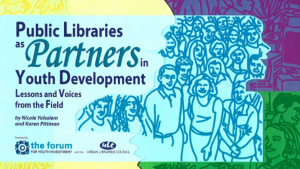
It’s back. Henry Foster’s appointment as unpaid advisor to the Clinton-backed National Campaign to Prevent Teen Pregnancy ensures that pregnancy is, once again, a national topic. Should it be? Yes. But will this round of attention have lasting impact on the problem? The reality quotient — the relationship between proposed solutions and basic facts — remains depressingly low.
Chronicle the efforts of one organization to educate the public and policy makers on the problem and possible solutions. Twenty years ago, the Alan Guttmacher Institute (AGI), the clarion of teenage pregnancy, published 11 Million Teenagers, charting the status of adolescent sexual behavior and its consequences. There was broad agreement with the conclusion: teenage pregnancy is a preventable problem, but splintered reactions to the recommendations for increased sex education, contraceptive access and counseling. Some argued that these strategies positioned us atop a slippery slope of encouraging premarital sexual activity. Others that the strategies were too narrow — ignoring the effect that limited current and future life options have on motivation to delay parenthood.
Fifteen years ago, AGI jolted us out of complacency again. Teenage Pregnancy: The Problem that Hasn’t Gone Away informed us that birth rates were down but pregnancy rates were on the rise. Increases in sexual activity were outstripping increases in contraceptive use. Pregnancies among white teens were increasing.
Ten years ago, thinking that international comparisons might influence political will, AGI produced Teenage Pregnancy in Industrialized Countries. The findings: the U.S. birth and abortion rates outstrip those of most industrialized countries even though U.S. teens have comparable rates of sexual activity. The analysis: the U.S. has the weakest policies on sex
education and contraception, lacks a media-backed country posture on unprotected sexual activity, and has a fragmented health care system that makes it difficult for teens to access general and reproductive services.
Two years ago, AGI published Sex and America’s Teenagers. They compiled the best available data on teens’ attitudes, goals, and behaviors. They demonstrated graphically how the country’s failure to address this issue disproportionately affects those in greatest need; they pulled no punches in making recommendations:
If adults are going to help teenagers avoid the outcomes of sex that are clearly negative, they must accept the reality of adolescent sexual activity and deal with it directly and honestly…. Nothing better illustrates this country’s unwillingness to confront sexual issues than its failure to use the national media to educate young people and adults about the importance of using protection.
Guttmacher has not been alone in its steady reporting of the facts. The American Enterprise Institute, the Sexuality Information and Education Council of the U.S., the Children’s Defense Fund, Advocates for Youth and the National Academy of Science are among just a few to beat the drum of statistical reason. So why can’t we solve the problem? Because we don’t approach it head on.
Clinton has attracted a range of high-profile media folks to the new campaign. But it has early signs of tiptoeing. An alternative? Let youth run the campaign. Give them the facts, give them the ad agency, give them the access to the star power to do the spots. Give them the budgets to develop state and local coalitions, advise on training, programming and outreach. Their views are no less diverse. That’s guaranteed. But they listen. They learn. They act. They adjust. They get things done and they know the score. It isn’t just that teens will listen to other teens. It is that, for young people, the bottom line is neither preserving virginity nor gaining access to contraception — it’s life.
Teenage pregnancy, first and foremost, is a political problem. And until adults are willing to carve steps into the slippery slope of adolescent sexual activity, there is little chance that any of the solutions needed will be implemented widely or long enough to make a permanent difference.
We welcome your contributions to the topic. Please reach out to talkwithus@kpcatalysts.com if you’d like to join to the discussion.

Pittman, K. (1996, May/June). “The Problem that Won’t Go Away.” Washington, DC: The Forum for Youth Investment. A
version of this article appears in Youth Today.



No comment yet, add your voice below!